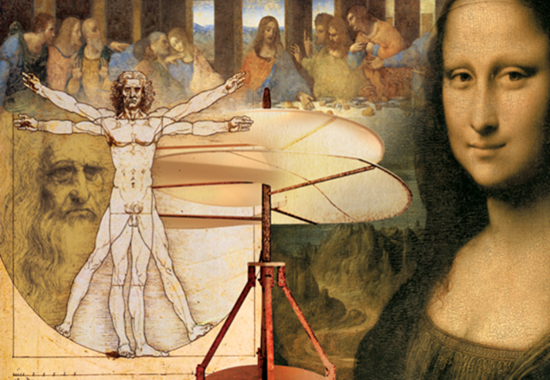A Paucity of Curiosity?

This week I had a wonderful connection with a colleague who is doing amazing work focused on equipping organizations to thrive and fully realize their social purpose. In the course of a conversation that bounced effortlessly from topic to topic, she suggested one of our greatest challenges today was ‘a paucity of curiosity’ and a ‘reluctance to tackle new learning’.
It was an elegant and insightful way of presenting a critical issue. It was also rather disconcerting because curiosity and creativity are what we need more of if we are to tackle challenging issues such as global warming, food insecurity, inequality, and more. It will be especially important if we are to mobilize all sectors to collaborate and innovate in order to strengthen individual, community, economic, and environmental wellbeing.
As it turns out, being curious about learning was also a principle that contributed to Leonardo da Vinci being an accomplished scientist, mathematician, inventor, painter, sculptor, musician, and writer.
Best known for creating many famous works including the Mona Lisa and The Last Supper, Da Vinci has been cited by many as the most diversely talented individual to ever have lived.
His interests, abilities, and accomplishments spanned many fields of study and in each area he pursued, he demonstrated an unparalleled brilliance.
In How to Think like Leonardo da Vinci, author Michael J. Gelb outlines the essential elements of Da Vinci’s genius and pinpoints what he calls the seven da Vinci principles.
He believed anyone can emulate da Vinci by cultivating their thinking in these areas:
1. Curiosità: An insatiably curious approach to life and an unrelenting quest for continuous learning. Great minds have one characteristic in common - they continuously ask questions throughout their lives. Leonardo reflected this in his endless quest for truth and beauty.
2. Dimostrazione: A commitment to test knowledge through experience, persistence, and a willingness to learn from mistakes.
3. Sensazione: The continual refinement of the senses, especially sight, as the means to enliven experience.
4. Sfumato: A willingness to embrace ambiguity, paradox, and uncertainty.
5. Arte/Scienza: The development of the balance between science and art, logic and imagination. In other words, “whole-brain” thinking.
6. Corporalitá: The cultivation of grace, ambidexterity, fitness, and poise.
7. Connessione: A recognition of, and appreciation for, the interconnectedness of all things and phenomena. Today we would typically refer to this as big-picture or systems thinking.
Ultimately, Gelb believes that da Vinci’s genius stemmed from the ability to see the world through a lens of imagination, creativity, and wonder. To harness brilliance, he suggests one must use all parts of their brain, both artistic and logical, and have the ability to see how the various puzzle pieces of life fit together.
To think like da Vinci is to question the way things are, and why, and to have an unending curiosity and desire to create.
For sure our world has major issues. However, we also have amazing opportunities to contribute to making it better by nurturing, investing in, and ultimately unleashing our own curiosity as well as that of others.
Posted on 09-09-22Next entry: Why Jobs Make Me Twitchy
Previous entry: What the Heck Do I know About Prison Reform?

 Brenda Herchmer is the owner of Grassroots Enterprises, a community development consulting company.
Brenda Herchmer is the owner of Grassroots Enterprises, a community development consulting company.